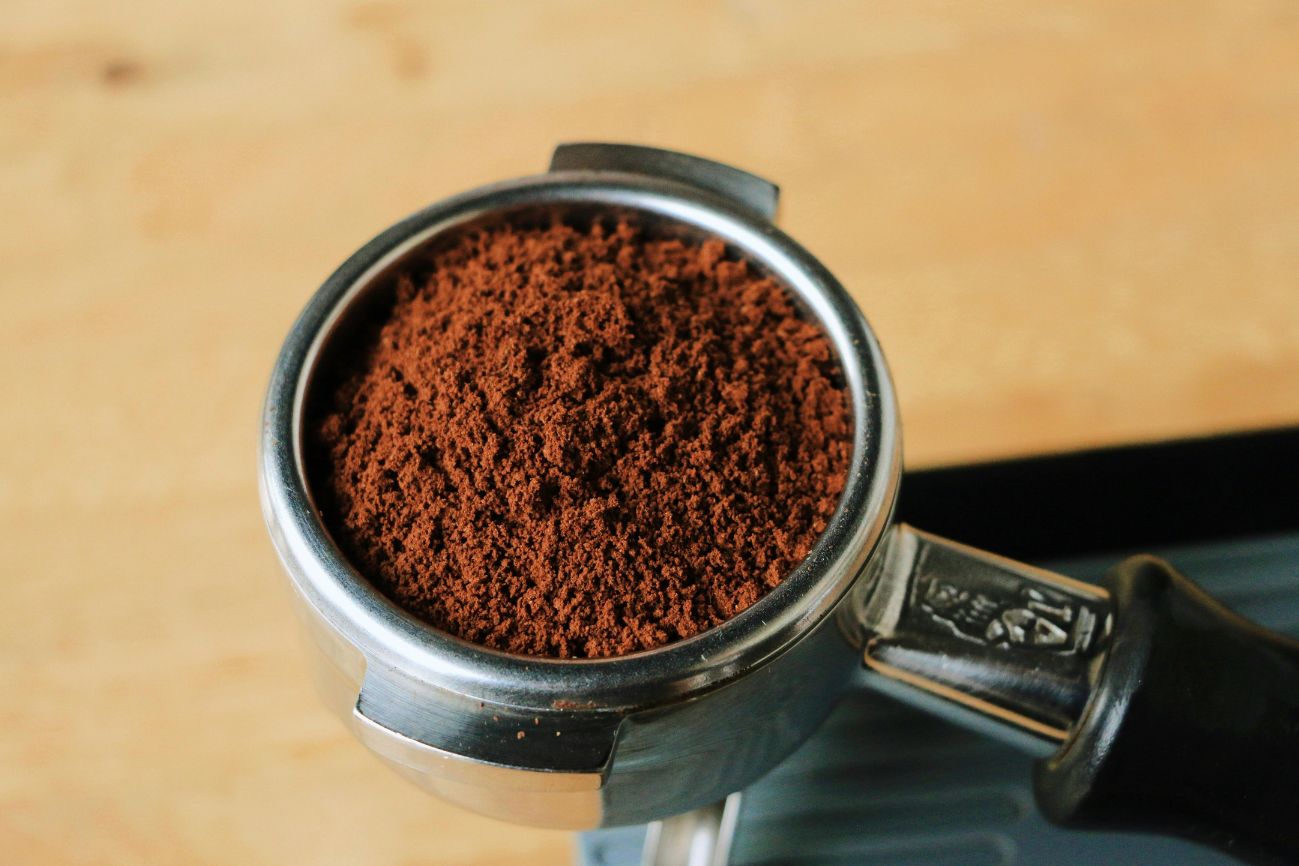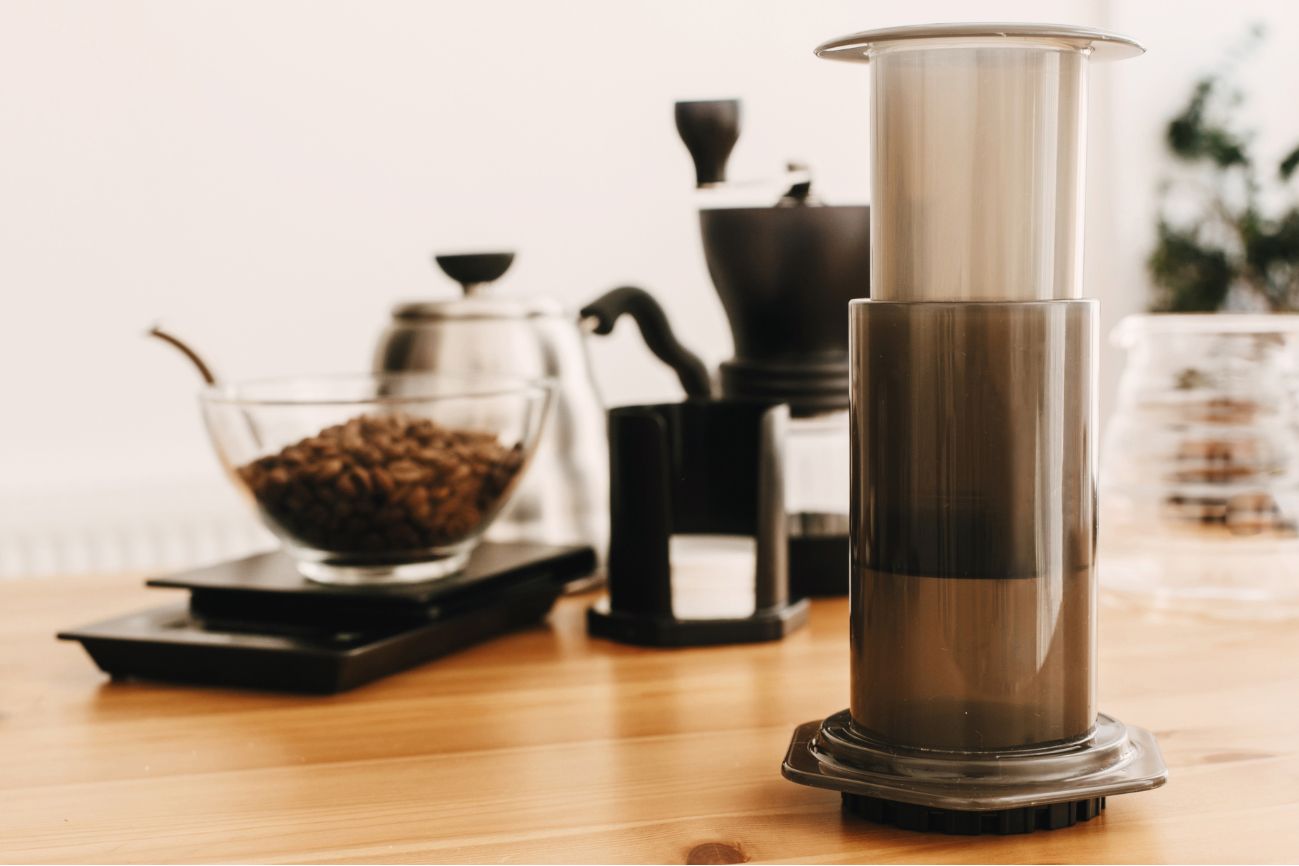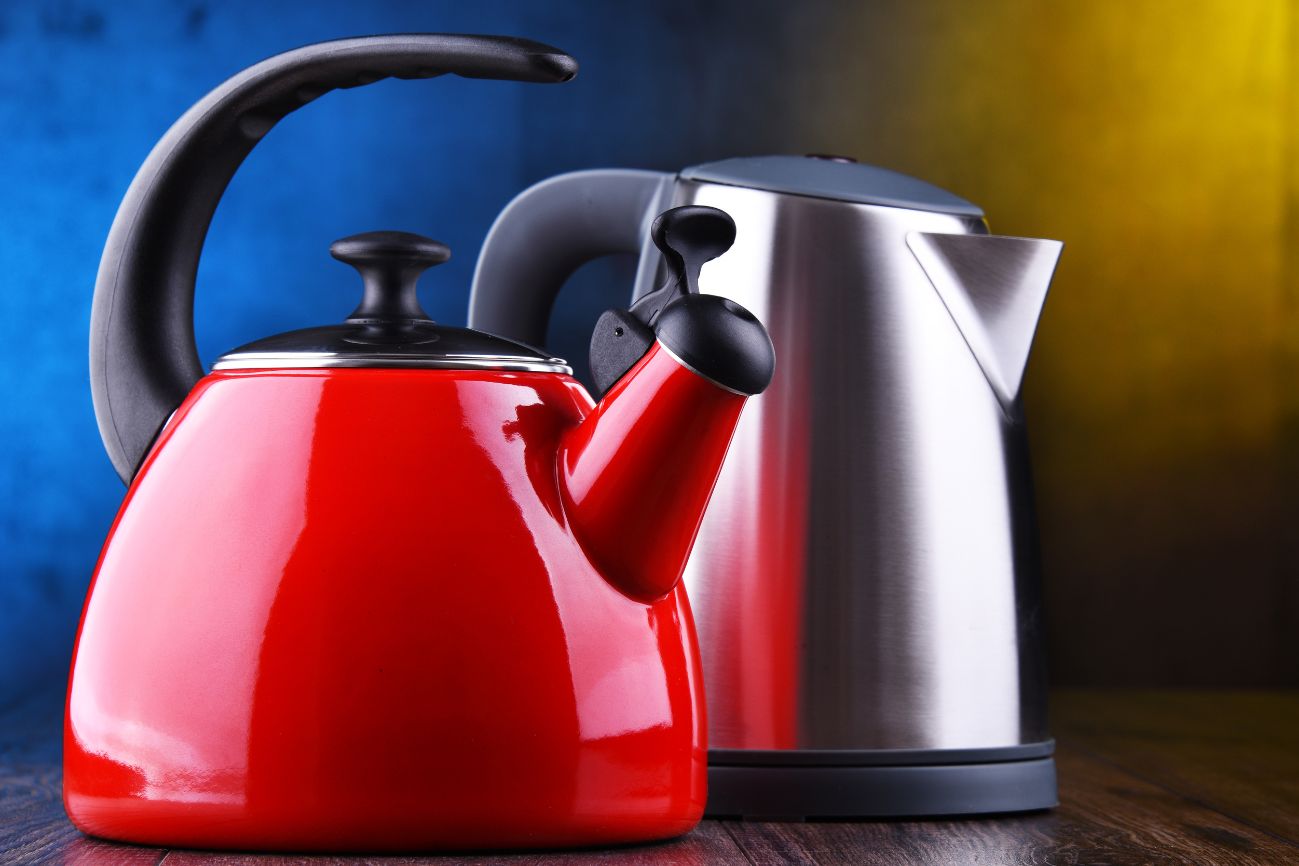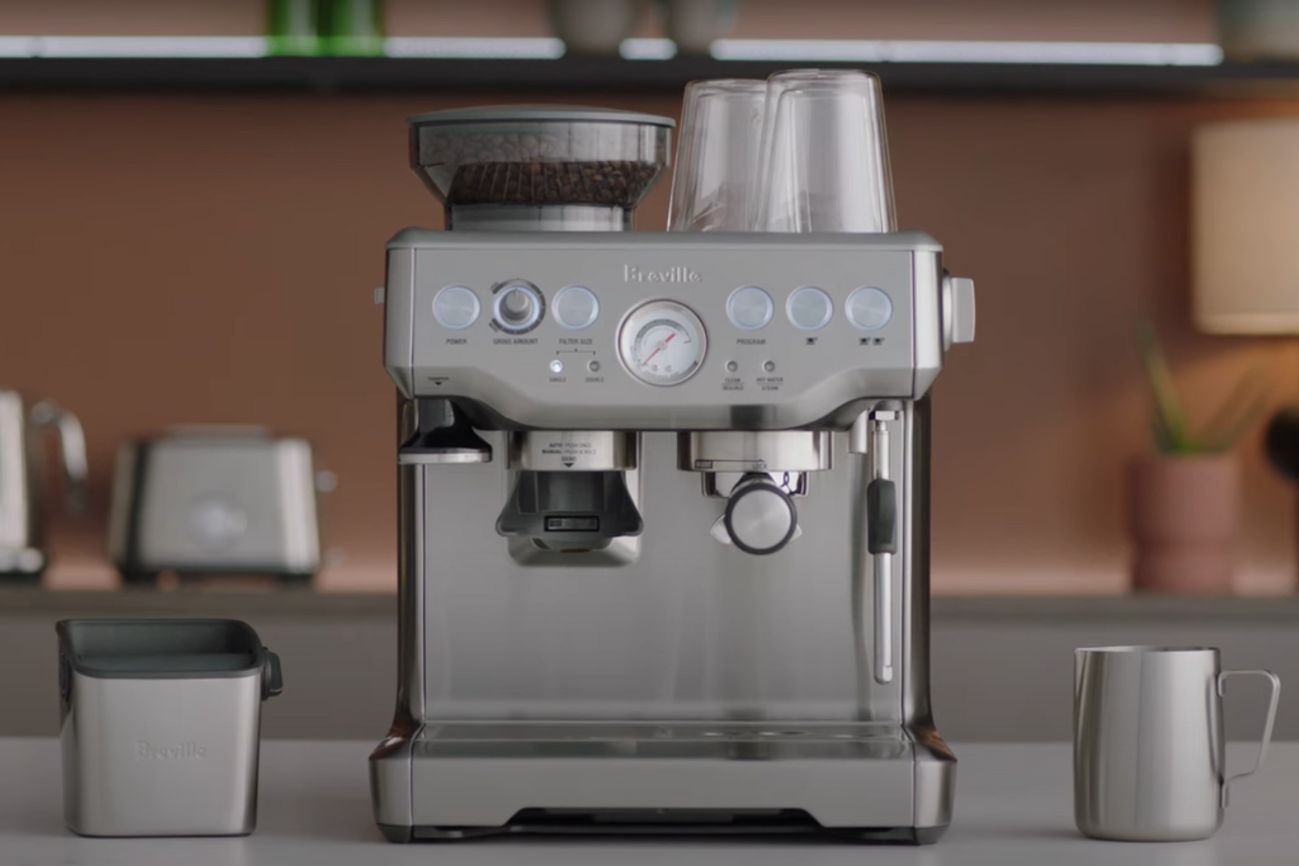Have you ever seen an espresso machine working? If you have, you must have wondered about the small handle in which coffee is placed before attaching it to the espresso machine. Why is it used? What is its main function? And why is it so important? Can coffee not be made without it? These questions have surely crossed your mind.
So, today, let’s explore this small handle known as the portafilter, understand how it is used, the different types available, and how to choose the right one for your espresso machine.
What does a Portafilter look like?
The portafilter is an espresso machine’s most important component. If you don’t have a portafilter, you can’t use an espresso machine to make coffee. It looks like a spoon with a filter basket and a big handle. It brews coffee once we attach this handle to the group head.
How Does It Work?
Portafilter works by attaching to the group head. To establish the proper pressure for extraction, we place the coffee grinds in the portafilter’s filter basket and tamp it down. And then we attach it to the group head. The group head seals and attaches the portafilters and creates pressure. After that, the water flows through the coffee grinds in the sealed basket, extracting all the coffee’s flavors before pouring it into your cup.
Why It’s Necessary?
According to experts, Portafilter espresso offers exceptional quality and flavor. It is the most crucial part of an espresso maker to make a rich, flavorful cup of coffee. By controlling the water flow under pressure, it extracts all the aromas and flavors from the coffee grinds. Espresso machines with portafilters, such as the Breville Barista Express, are a must-try if you like a strong, robust, and rich cup of espresso.
Parts
Let’s see how many components a portafilter has.
- Handle: The handle of the portafilter is used to hold it. You can’t hold it and attach it to the group head without the handle. It helps to hold and attach it to the group head.
- Basket: The major component where coffee grinds are placed is the portafilter basket, which is attached and sealed with the group head. Coffee flavors are extracted while water flows through the basket over the coffee grinds.
- Spout: A spout in a portafilter is the small nozzle at the bottom that directs the flow of espresso into your cup. After hot water passes over the coffee grinds in the basket, the extracted espresso is poured into your cup through the spout. Some portafilters have one spout (for a single shot) or two spouts (for double shots), helping to pour espresso evenly into one or two cups.
- Spring Clip: A spring clip in a portafilter is a small metal ring or wire inside that holds the filter basket securely in place. When you knock out used coffee grounds, it prevents the basket from falling out. The spring clip is important for keeping the basket stable, ensuring proper extraction, and making it easier to remove the basket when needed.
- Guage: The pressure used during the espresso extraction process is measured by a gauge in an espresso machine. It helps the process of checking the proper pressure when brewing. Your espresso’s flavor profile and taste will be affected if the pressure is too high or too low.
Types of Portafilter
Here are a few types of portafilters. All the portafilters have the same purpose, but they are slightly different from each other. Let’s talk about the types of portafilters.
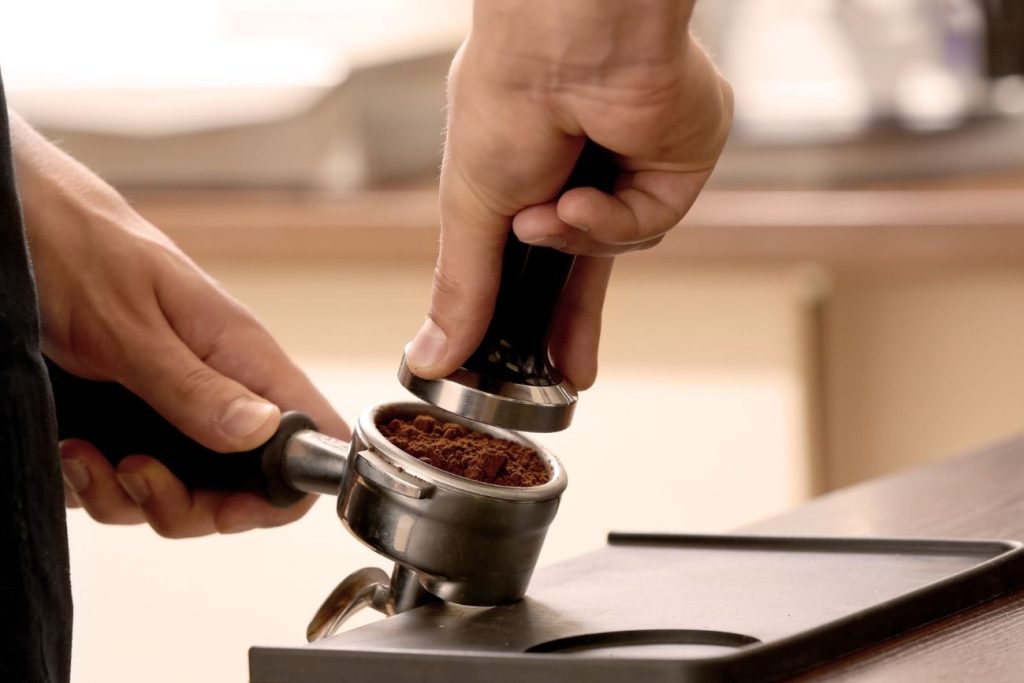
1. Pressurized (Double-Walled) Portafilter
Pressurized portafilters are made to produce extra pressure to improve the flow of water and extract all the coffee’s flavors and aromas from coffee grinds.
You can’t just rely on tamping and grind size to produce the robust and rich flavor of coffee. Water is forced through the coffee grounds by the increased pressure in portafilters, promoting even extraction and saturation. You can control the water flow with pressure to create the espresso flavor you want.
2. Standard (Non-pressurized) portafilter
As implied by their name, non-pressurized portafilters lack the pressure-generating mechanism. You must be careful with tamping and ground size in these because they only require these two factors to create the right amount of pressure.
To ensure that the water passes through the coffee grounds uniformly, the proper distribution of the coffee grounds is necessary. Coffee grinds will be over-extracted from some areas and under-extracted from others if they are not distributed uniformly throughout the basket. This will significantly affect your coffee’s flavor and quality.
Therefore, to get the best and most ideal shot of espresso, while using the non-pressurized type, make sure it distributes the coffee grounds uniformly.
3. Bottomless Portafilter
This type has no spouts—just a basket with an open bottom so you can see the espresso dripping directly into the cup.
The entire extraction process is visible in these naked portafilters. Not only is the entire extraction process visually pleasing, but you can also see the crema forming, which ensures that the espresso shot is of high quality. By watching the extraction process, you can determine the tamping pressure, grind consistency, and overall brewing method.
With this, you can also become an expert brewer. You can see every issue you’re having with the brewing. The coffee will come in a single stream in the middle if the coffee grinds are correctly tamped and distributed. However, your coffee stream will be messed up and start shooting in different directions if you mess with the evenness of the coffee grounds.
It is the greatest one if you want to get skilled in the brewing process. You can readily see your errors and fix them.
Some people, even baristas, dislike it because, if they don’t consider essential factors like tamping and grind size, it may result in a complete mess.
4. Spouted Portafilters
Theses are popular among coffee drinkers and baristas because they do not create any mess. Whether you use a single or double-spouted one, the coffee will flow straight into your cup without producing uneven streams or espresso shoots.
You should not worry about it if you are unable to properly distribute or tamp the coffee grinds. Everything is going to be handled by this. Your coffee will pour into your cup after passing through the spout. Any uneven coffee streams will be controlled within the spout, allowing you to get even, smooth streams of coffee straight into your cup.
5. Pod Portafilter
These are unique portafilters designed specifically for using coffee pods rather than coffee grounds. These are specifically made for ESE pods, called “easy-serve espresso.” Coffee pods are pre-packaged pieces of coffee that make brewing espresso incredibly simple without grinding or tamping. , You can start brewing after inserting the pod into the portafilter and locking it into the machine. If you have an espresso machine that can brew espresso pods, you won’t need the separate ones.
Sizes: 51mm, 54mm, 58mm
Always select sizes based on the dimensions of your espresso machine. Portafilters come in three primary sizes: 51, 54, and 58 mm. Most commercial coffee machines, such as Gaggia, have a 58mm. Other home espresso makers often have in sizes 51mm and 54mm. Breville Barista Express has a 54mm.
But when it comes to the ideal size, espresso makers with 58mm are the best since they hold heat better. Additionally, there are lots of accessories available for this size.
Which One to Choose: Single, Double, or Triple Shot Basket
Single, double, and triple shots are some of the sizes of baskets that fit inside the portafilter. These can hold different amounts of coffee grinds because of their different sizes. You can purchase a filter basket size based on how much coffee you wish to make.
Single Shot Basket
A single-shot basket typically holds 6 to 12 grams of coffee grinds. These baskets are frequently used with espresso machines at home. To maintain the flow speed, these baskets also contain fewer holes at the bottom than others. These baskets will provide you with a single shot of espresso.
Double Shot Basket
To hold coffee grounds, double-shot baskets are typically available in sizes ranging from 15 to 21 g. In specialty coffee shops, these baskets are frequently used for commercial espresso machines. The most demanding espresso at coffee shops is the double shot.
Triple Shot Basket
You should try triple-shot baskets if you enjoy extra caffeine. These are like single or double-shot baskets; besides, they have a capacity of 22 to 32 grams for coffee.
Triple-shot baskets are used in larger coffee drinks, including lattes, cappuccinos, and Americanos. Additionally, specialty coffee shops use these to make strong, quality espresso.
Benefits of Using a Portafilter
Some people question why portafilters are necessary to achieve the ideal espresso shot. Then, this is what a portafilter will provide you.
- Better Espresso Quality: You can get a rich and flavorful shot of espresso using a portafilter because it allows proper extraction.
- Customizable Brewing: For a perfect shot, you can control grind size, tamping pressure, and coffee amount.
- Crema Production: A good portafilter helps you to get a smooth, golden crema on top of the espresso, which not only appeals aesthetically but also makes the espresso shot so flavorful and creamy.
- Durability: Most portafilters are made of strong materials like stainless steel or brass, and last a long time.
- Barista Skill Improvement: Using a portafilter helps you learn and master the art of making espresso.
Common Mistakes to Avoid
These are some common mistakes that most people make when brewing espresso. If you want the ideal espresso shot, you must steer clear of these mistakes.
- Using the wrong grind size: If you are using too coarse coffee grounds, espresso will be weak; if too fine, it may clog the machine.
- Not tamping evenly: Although tamping is the most important step, some people don’t care about it. Tamping will produce an even, smooth surface that allows for even extraction and proper water flow.
- Using too much or too little coffee: If you use too little coffee, it will come out sour due to under-extraction, and if you use too much, it will come out bitter due to over-extraction.
- Not cleaning the portafilter properly: The taste of your coffee will be affected by residue buildup if you don’t properly clean your portafilter.
- Forgetting to preheat the portafilter: Your coffee’s flavor will be affected if you don’t preheat the portafilter before brewing, because it will cool the espresso.
- Overloading the basket: If you pack too much coffee, water won’t flow properly, causing channeling.
- Not locking the portafilter properly: If you don’t lock it properly, water may leak, and the espresso won’t brew correctly.
Choosing the Right One
When selecting a portafilter, it is important to consider the machine’s type, group head size, and portafilter size to ensure that it meets your needs. Here are a few suggestions for you.
- For beginners: Pressurized or pod portafilters offer ease of use and consistency.
- For intermediate users: Non-pressurized portafilters allow more control over extraction.
- For experts: Bottomless provides the best insight into the
- espresso-making process.
Maintenance and Cleaning
Maintaining your portafilter’s cleanliness and proper care is crucial to ensuring its longevity and high quality. The overall flavor of your espresso will be impacted by residue buildup if it is not cleaned thoroughly. To keep it in good condition and always get the greatest coffee flavor, follow these steps.
- Daily Cleaning: Rinse the portafilter with hot water after each use to remove coffee residue.
- Deep Cleaning: Use a coffee detergent to soak the portafilter and remove built-up oils.
- Regular Inspection: Check the gasket and basket for wear and tear, replacing them as needed.
Wrap Up
A portafilter is a crucial component in the espresso-making process and is more than just a coffee accessory. The quality of your espresso can be greatly affected by knowing the different types of portafilters and how they operate. We have discussed some kinds of portafilters, their differences, and their functions. Selecting a suitable portafilter and keeping it in good condition will improve your coffee experience, no matter your level of skill as a barista. You may become an expert at making espresso and enjoy each drink to the fullest with the correct training and understanding.
Check Out “The Ultimate Guide to Cold Brew Coffee: Everything You Need to Know“

